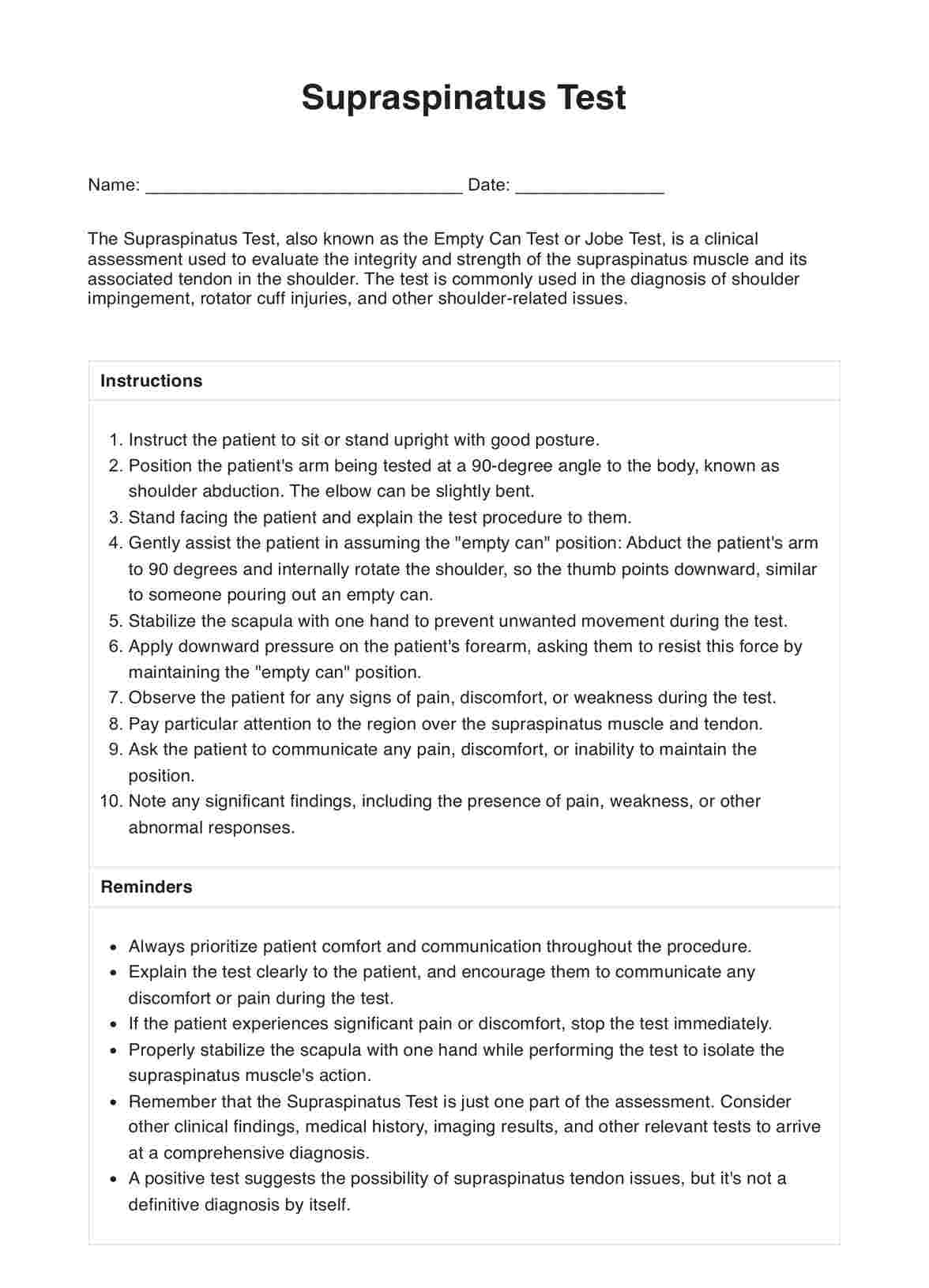This assessment tool doesn't have a scoring system; its primary purpose is to detect signs of pain and weakness. Practitioners evaluate the results to make a diagnosis.

Supraspinatus Tests
Learn how to perform the Supraspinatus Test to help diagnose a shoulder injury. Download our free PDF template and guide to get started.
Use Template
Supraspinatus Tests Template
Commonly asked questions
The Supraspinatus Test assesses shoulder strength and range of motion, helping identify potential injuries, determine injury severity, monitor progress, and outline treatment plans.
The Supraspinatus Test measures the strength and range of motion of the shoulder. It detects pain, weakness, or other abnormal movements that could indicate an injury.
EHR and practice management software
Get started for free
*No credit card required
Free
$0/usd
Unlimited clients
Telehealth
1GB of storage
Client portal text
Automated billing and online payments











